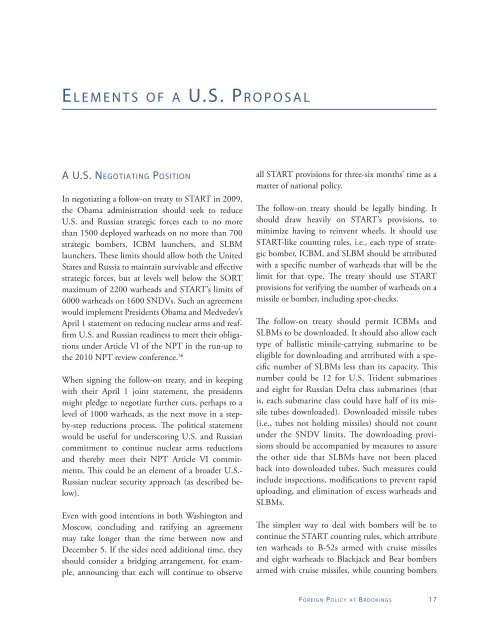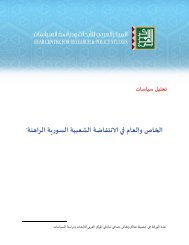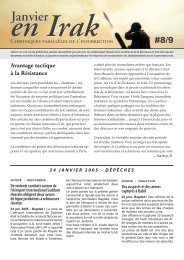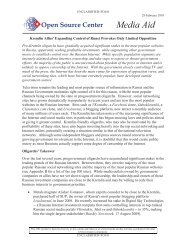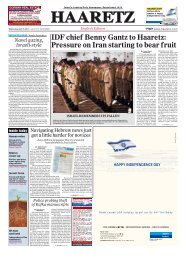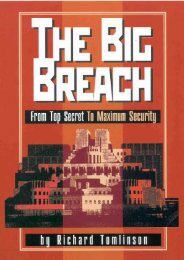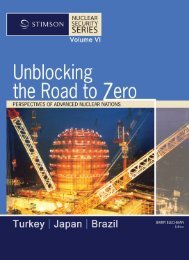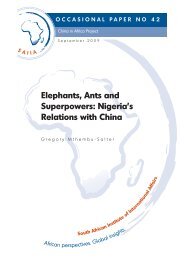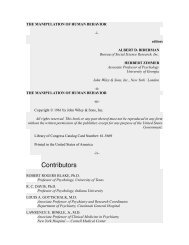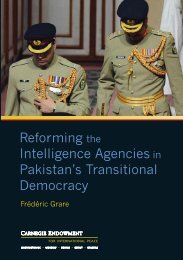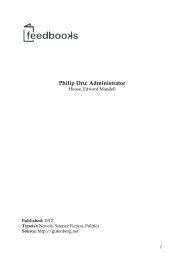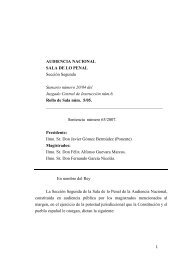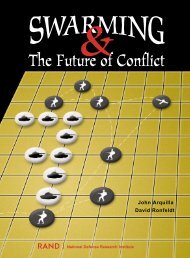Beyond START - Brookings Institution
Beyond START - Brookings Institution
Beyond START - Brookings Institution
You also want an ePaper? Increase the reach of your titles
YUMPU automatically turns print PDFs into web optimized ePapers that Google loves.
E l e m e n t s of a U.S. P r o p o s a lA U.S. Negotiating PositionIn negotiating a follow-on treaty to <strong>START</strong> in 2009,the Obama administration should seek to reduceU.S. and Russian strategic forces each to no morethan 1500 deployed warheads on no more than 700strategic bombers, ICBM launchers, and SLBMlaunchers. These limits should allow both the UnitedStates and Russia to maintain survivable and effectivestrategic forces, but at levels well below the SORTmaximum of 2200 warheads and <strong>START</strong>’s limits of6000 warheads on 1600 SNDVs. Such an agreementwould implement Presidents Obama and Medvedev’sApril 1 statement on reducing nuclear arms and reaffirmU.S. and Russian readiness to meet their obligationsunder Article VI of the NPT in the run-up tothe 2010 NPT review conference. 36When signing the follow-on treaty, and in keepingwith their April 1 joint statement, the presidentsmight pledge to negotiate further cuts, perhaps to alevel of 1000 warheads, as the next move in a stepby-stepreductions process. The political statementwould be useful for underscoring U.S. and Russiancommitment to continue nuclear arms reductionsand thereby meet their NPT Article VI commitments.This could be an element of a broader U.S.-Russian nuclear security approach (as described below).Even with good intentions in both Washington andMoscow, concluding and ratifying an agreementmay take longer than the time between now andDecember 5. If the sides need additional time, theyshould consider a bridging arrangement, for example,announcing that each will continue to observeall <strong>START</strong> provisions for three-six months’ time as amatter of national policy.The follow-on treaty should be legally binding. Itshould draw heavily on <strong>START</strong>’s provisions, tominimize having to reinvent wheels. It should use<strong>START</strong>-like counting rules, i.e., each type of strategicbomber, ICBM, and SLBM should be attributedwith a specific number of warheads that will be thelimit for that type. The treaty should use <strong>START</strong>provisions for verifying the number of warheads on amissile or bomber, including spot-checks.The follow-on treaty should permit ICBMs andSLBMs to be downloaded. It should also allow eachtype of ballistic missile-carrying submarine to beeligible for downloading and attributed with a specificnumber of SLBMs less than its capacity. Thisnumber could be 12 for U.S. Trident submarinesand eight for Russian Delta class submarines (thatis, each submarine class could have half of its missiletubes downloaded). Downloaded missile tubes(i.e., tubes not holding missiles) should not countunder the SNDV limits. The downloading provisionsshould be accompanied by measures to assurethe other side that SLBMs have not been placedback into downloaded tubes. Such measures couldinclude inspections, modifications to prevent rapiduploading, and elimination of excess warheads andSLBMs.The simplest way to deal with bombers will be tocontinue the <strong>START</strong> counting rules, which attributeten warheads to B-52s armed with cruise missilesand eight warheads to Blackjack and Bear bombersarmed with cruise missiles, while counting bombersFo r e i g n P o l i c y at Bro o k i n g s 17


